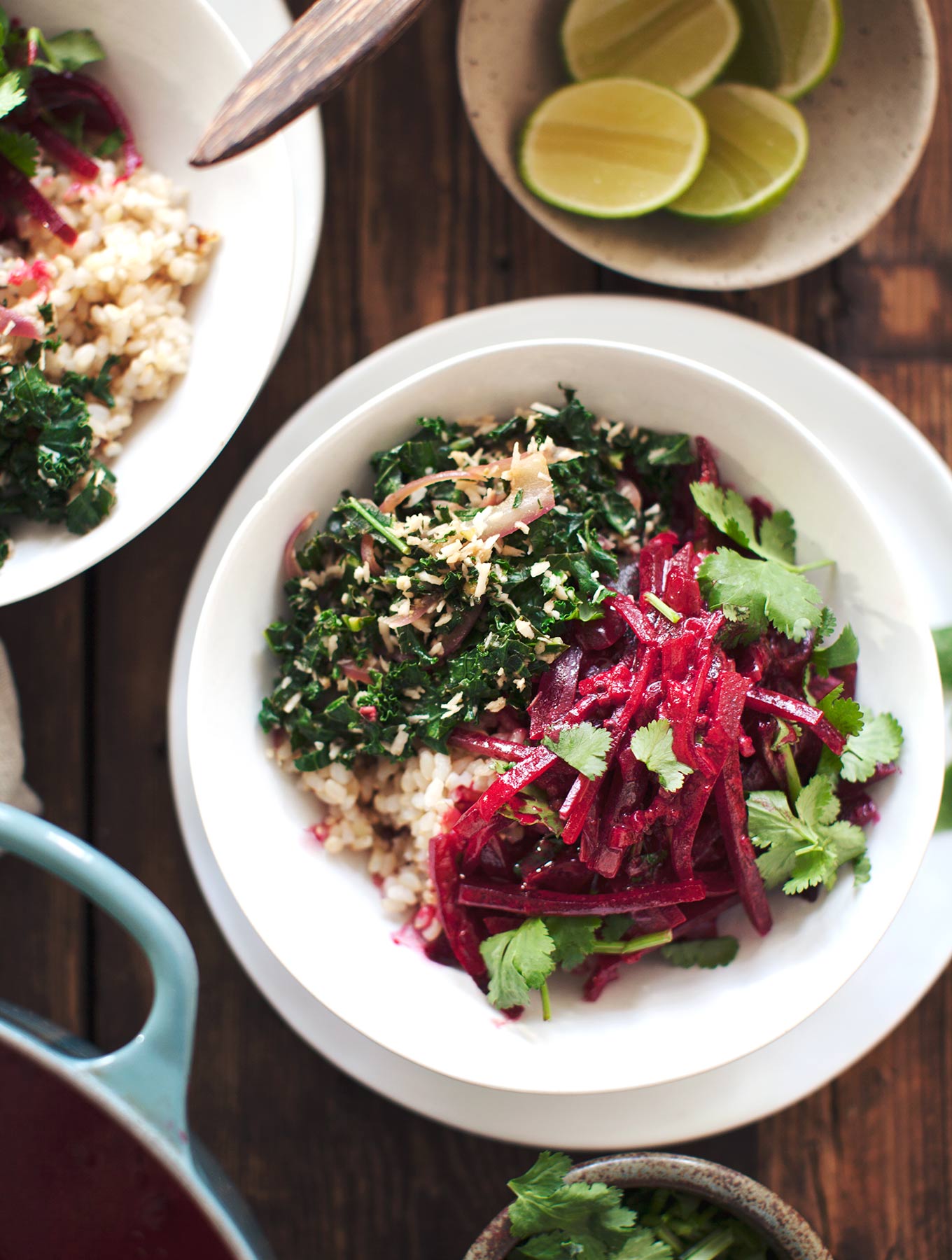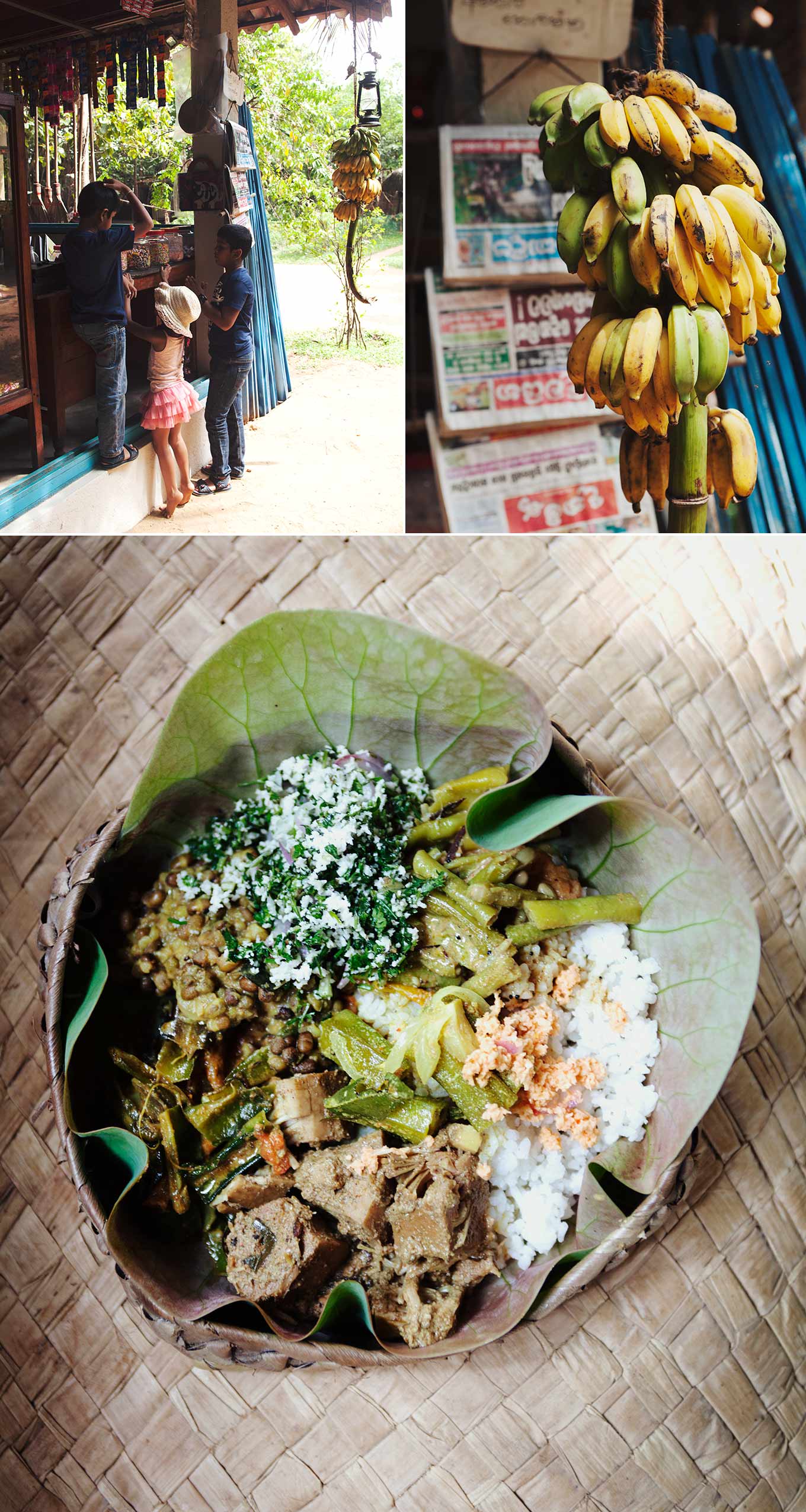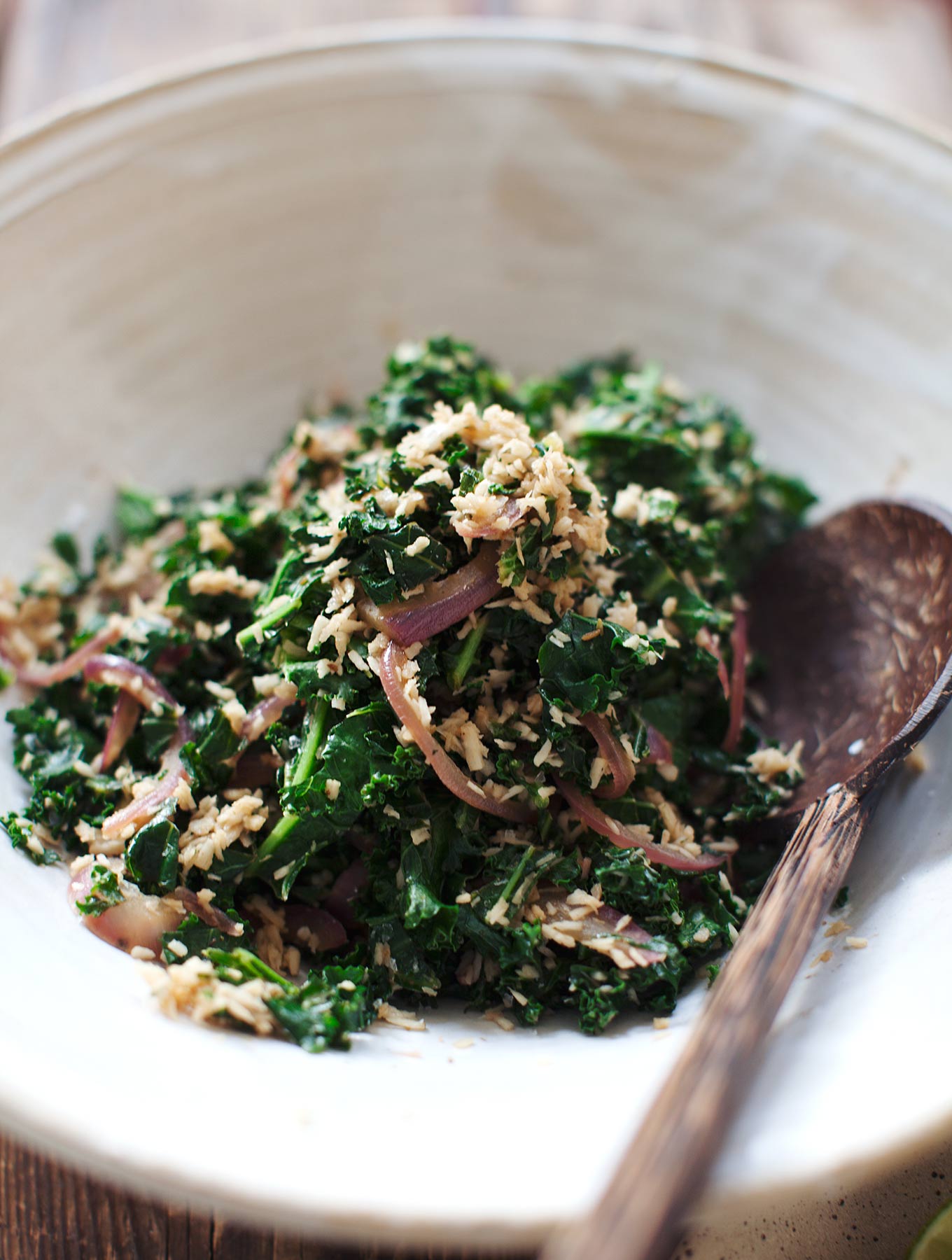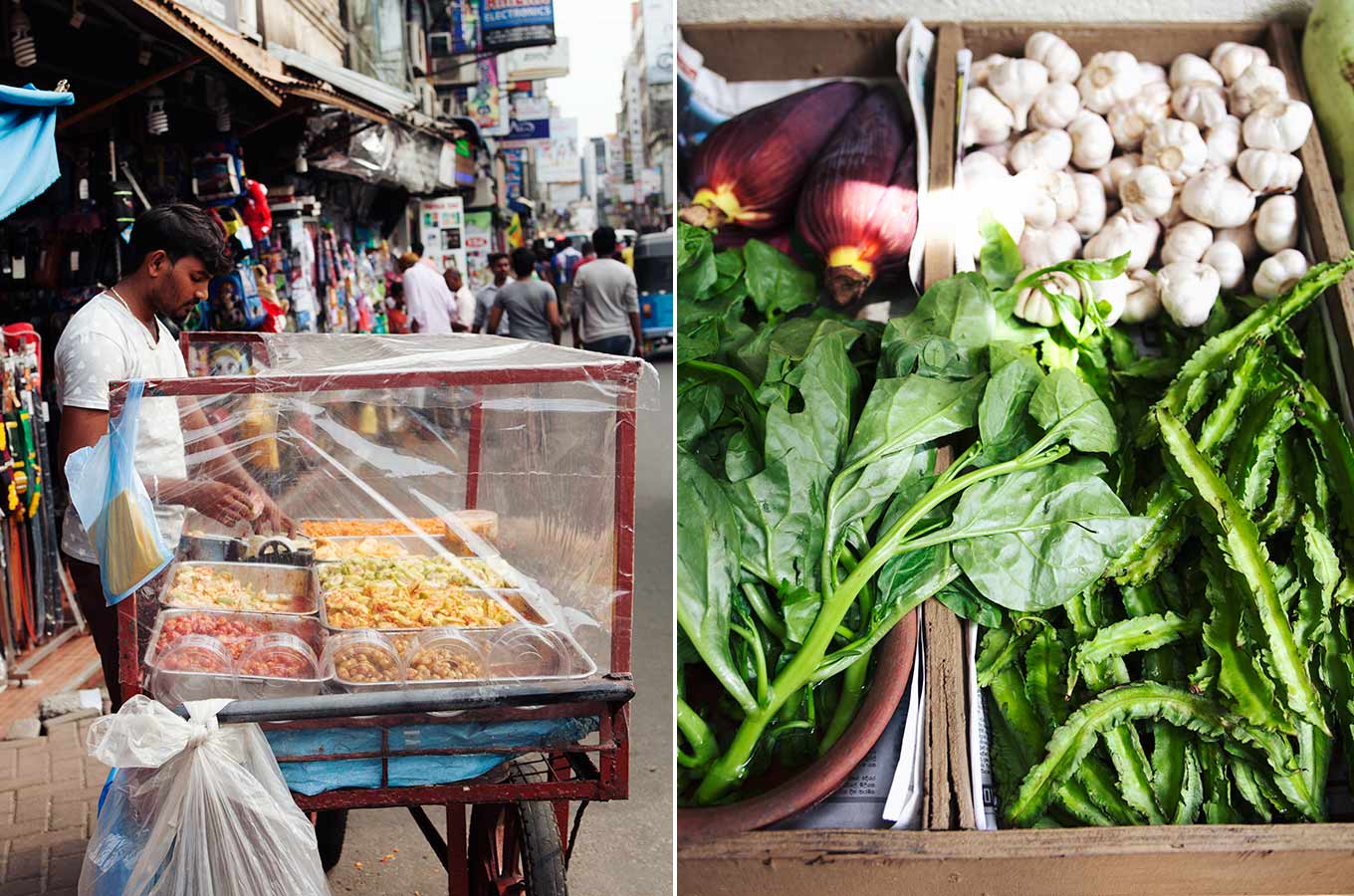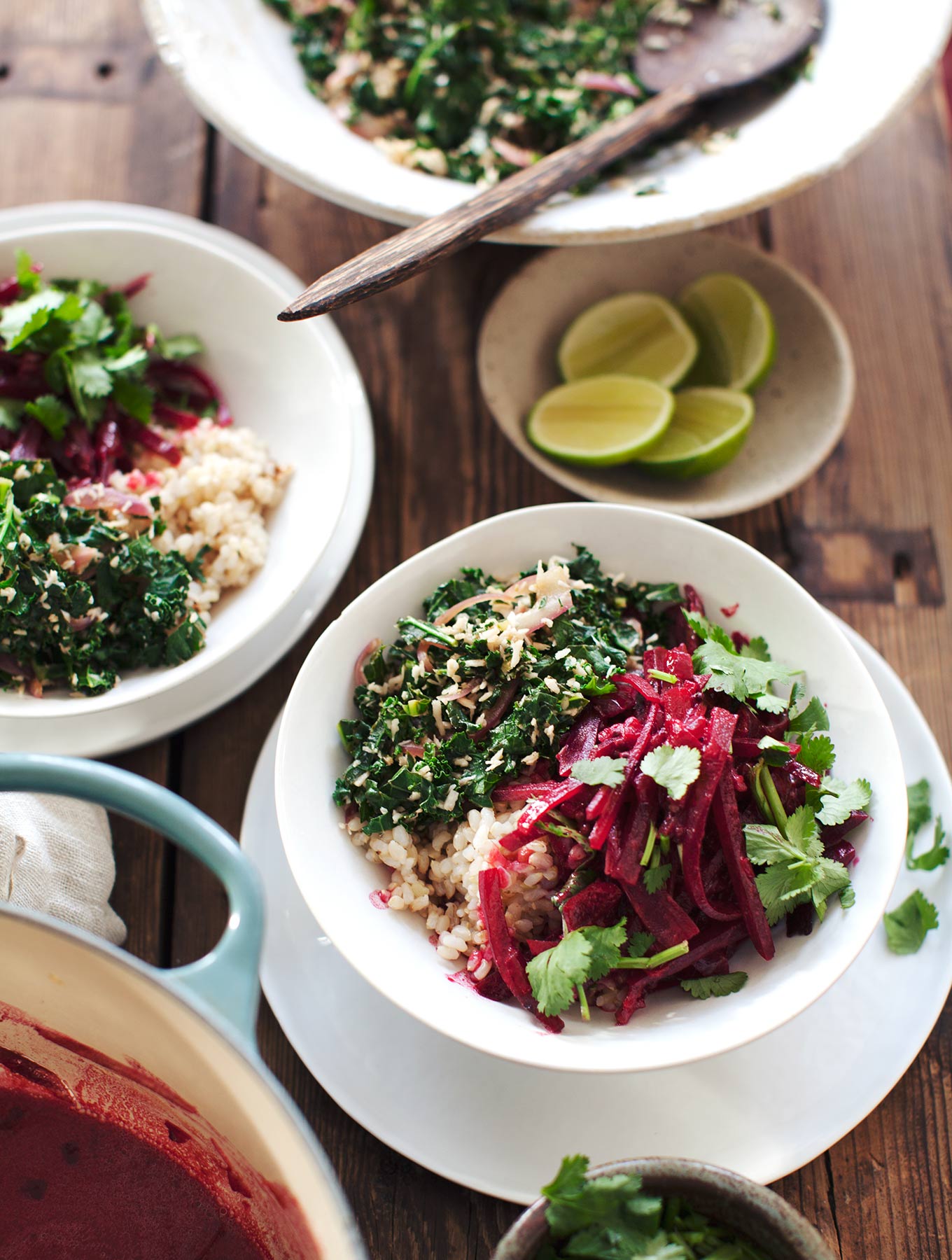
At first, it was a coincidence. When we looked at the vegetables we had brought home from the market this weekend, many of them just happened to have purple, violet and dark lavender tones. We talked about how that huge bunch of purple kale could make a beautiful salad base together with the rainbow chard, mint flowers and purple sugar snaps. It was at that point my obsessive side took over. “Let’s ONLY DO purple ingredients!” I shouted into Luise’s ear. She turned her head towards me with that hesitant look she always has when I get one of my “brilliant” ideas: “Ok, slow down now, let’s talk about the flavours first”. Of course I didn’t hear her as I was already writing a list with all the purplish ingredients I could think of: “aubergine, purple cauliflower, plums, figs, olives, blackberries, grapes, beetroot, red onion, …”.
Some recipes are born out of genius flavour combinations or new preparation methods, this one simply started out as a colour. Luise did however quickly gain back control and started shifting focus to the flavour and combination of vegetables as well.

In the end, I think we managed to combine both flavour, colour and texture in a great way. We roasted aubergine and purple spring onion in warm spices until soft and sweet. Massaged the kale with a flavourful dill, mint, lemon and honey dressing to round off its flavour and make it less sturdy. Cooked black lentils were added as a filler, along with rich and creamy avocado (even though it’s more black than purple – and green inside!). Hazelnuts are not purple at all but they added a nice crunch to the texture. Juicy blackberries made a perfect topping.


The result was beautiful, a true harvest salad. Maybe not as purple as I originally imagined it (basically because most vegetables loose their colour when they are cut/baked/cooked), but still with lovely deep hues and so many interesting flavours – a mix of herby, sweet and tangy.
When the salad was assembled it still felt like we missed a creamy element, so we tried the honey roasted feta that we had seen on New York Times Cooking last week. It was perfect. Burnt and caramelised on the outside and almost melted on the inside. It completely ruined the dark purple theme but flavour- and texture wise, it was worth the sacrifice. You’ll notice that I smudged it in mashed blackberries as a poor attempt to camouflage it.


We should perhaps add that this wasn’t our kids favourite dish. They picked out the blackberries, avocado and feta cheese from the salad, leaving the raw kale to us. I guess purple isn’t their colour…

Purple Kale & Blackberry Salad with Roasted Honey Feta
Vegans can just skip the feta cheese or replace it with hummus. And replace honey with maple syrup.
Baked vegetables
1 aubergine / eggplant
4 spring onions or 2 red onions
2-4 tbsp extra virgin olive oil
1/2 tsp ground cinnamon
¼ tsp ground cumin
1 pinch ground cayenne
1/2 tsp sea salt
1 handful hazelnuts
Cooked lentils
½ cup uncooked lentils (we used black lentils)
1 ½ cup water
1 pinch sea salt
Dressing
1/3 cup extra virgin olive oil
1/2 lemon, juice
2 tsp honey or more to taste
sea salt & pepper
1 large handful mixed fresh dill, parsley and mint
Other salad ingredients
4 stalks curly kale, green or purple
4 stalks rainbow chard or spinach
2 avocadoes
1 small handful snap peas
1 punnet fresh blackberries, halved
Roasted feta with honey (from NYT)
1 block feta cheese, patted dry
2 tbsp olive oil
1 tbsp honey
Start by preparing the baked vegetables. Preheat the oven to 400°F / 200°C. Wash and cut the aubergine into large cubes and trim and slice the onions, then place in a mixing bowl. Stir together oil and spices in a small bowl, pour the oil mixture over the aubergine and onions and toss to combine. Transfer to a baking tray covered with baking paper. Bake in the oven for about 20 minutes or until very soft and golden, check every now and then to prevent from burning, the baking time depends on the size of the vegetables. Add the hazelnuts halfway through.
Meanwhile, cook the lentils in a saucepan with the water for 15 minutes or until tender and can be mashed easily between two fingers. Add sea salt towards the end of the cooking time. Drain any excess water and leave to cool.
Prepare the dressing by mixing oil, lemon juice, honey, salt and pepper in a small bowl. Chop the herbs finely and add to the oil mixture. Taste and adjust to your liking.
Remove the stems from the kale and coarsely chop the leaves. Finely slice the chard. Place all in a large mixing bowl, add 2 tbsp of the dressing and massage for a couple of minutes until soft. Transfer to a large serving bowl. Mix the lentils with the remaining dressing and pour them over the kale and chard mixture. Cut the avocado into cubes, slice the snap peas and roughly chop the hazelnuts. Add to the salad bowl together with the roasted aubergine, onions and hazelnuts. Toss slightly to combine and then scatter blackberries on top. If you like to serve the salad with the baked feta cheese, follow the instructions below.
Keep the oven at 400°F / 200°C. Place the feta cheese in a small ovenproof dish covered with baking paper and cover with oil. Bake in the oven for about 8 minutes, until soft but not melted. Melt the honey. Remove the cheese from the oven and turn the heat to broiler. With a baking brush, paint the cheese with the melted honey. Place back in the oven and broil until the top starts to brown. Use a spatula to immediately and carefully transfer the cheese to the salad, or serve it on the side.






